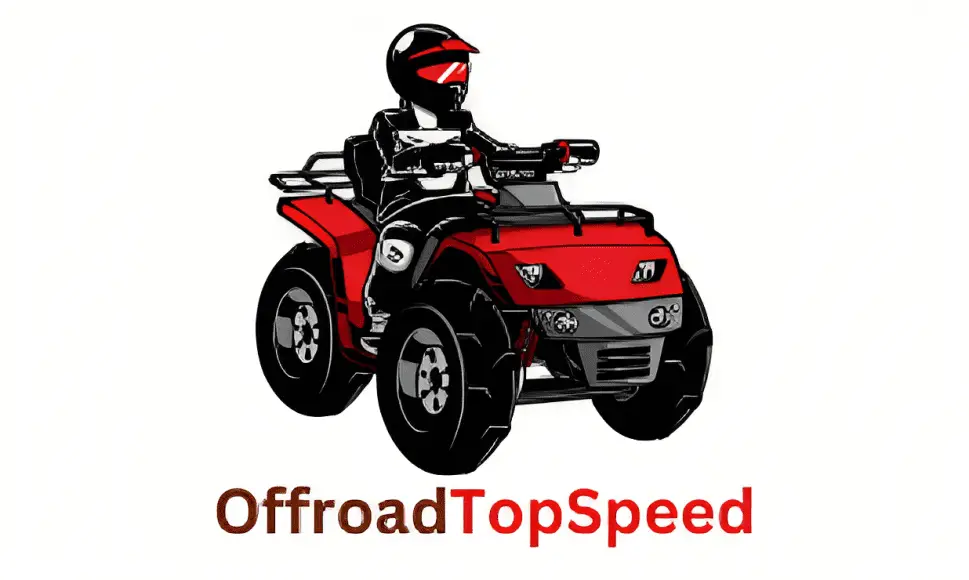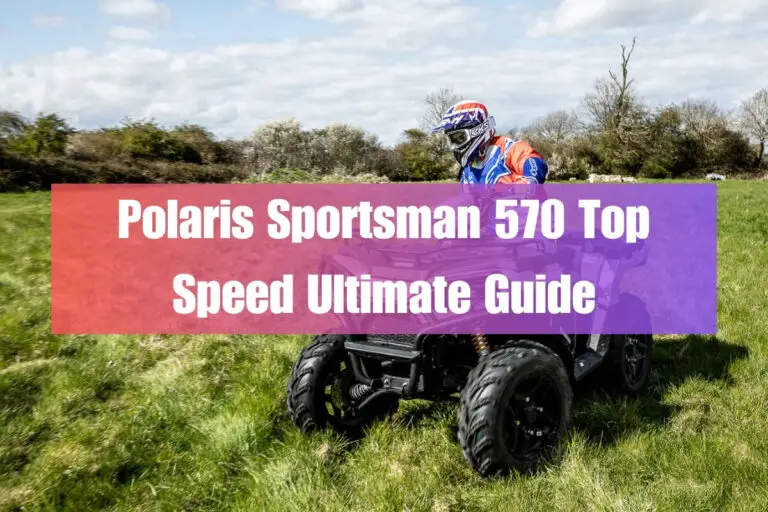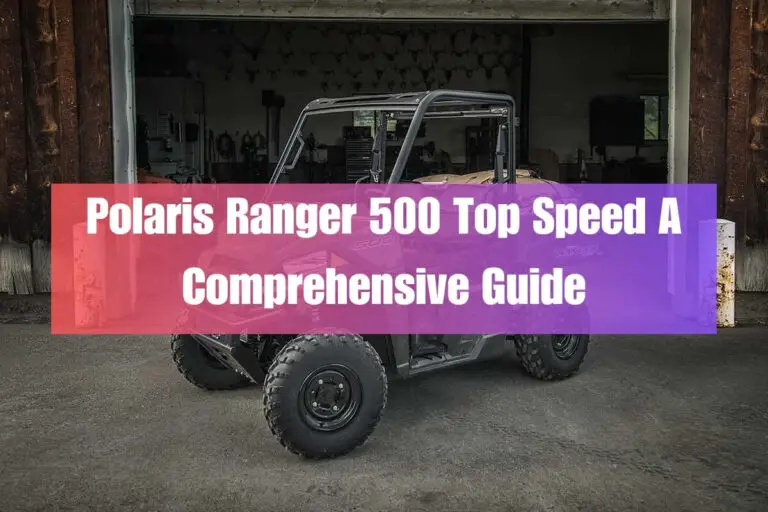What is the Real Top Speed for Polaris Ranger 1000?

The Polaris Ranger 1000 is one of the most popular utility terrain vehicles (UTVs) on the market today. With its muscular 999cc engine and roomy 3-seat configuration, this side-by-side is built tough for both work and recreation.
But just how fast can you go in the Ranger 1000? Does this UTV really reach an exhilarating top speed of 58-64 mph, allowing you to feel the thrill of high-speed off-roading?
The short answer is yes – the Polaris Ranger 1000 has a governed top speed from the factory of 58-64 mph depending on the model year. However, with some modifications, it is possible to override the speed limiter and reach speeds over 70-80 mph.
In this comprehensive guide, we will cover everything you need to know about the Polaris Ranger 1000 top speed including:
- Key specs and performance capabilities:
- Why the top speed is limited by Polaris
- How to bypass the speed limiter
- Additional speed boosting modifications
- Safety and legal considerations of exceeding 58-64 mph
- Owner impressions on driving this UTV at high speeds
So buckle up and get ready to put the pedal to the metal as we unpack maximum velocity in the Polaris Ranger 1000!
Overview and Key Specifications
Before getting into top speed, let’s review some key specs and capability metrics for the Polaris Ranger 1000 to better understand this versatile UTV:
Polaris Ranger 1000 Key Specifications
| Specification | Details |
| Engine & Drivetrain | |
| Cooling | Liquid |
| Cylinders Displacement | 999cc |
| Drive System Type | High Performance On-Demand True AWD/2WD/VersaTrac Turf Mode |
| Engine Braking System (EBS) | Not Equipped |
| Engine Type | 4-Stroke Twin Cylinder SOHC |
| Fuel System/Battery | Electronic Fuel Injection |
| Horsepower | 61 HP |
| Transmission/Final Drive | Automatic PVT H/L/N/R/P; Shaft |
| Dimensions | |
| Bed Box Dimensions (L x W x H) | 36.75 x 54.25 x 12.5 in (93.3 x 137.8 x 31.75 cm) |
| Box Capacity | 1,000 lbs (453.6 kg); California 600 lb (272.2 kg) |
| Dry Weight | 1,437 lb (652 kg) |
| Front/Rear Rack | N/A |
| Fuel Capacity | 11.35 gal (43 L) |
| Ground Clearance | 12 in (30.5 cm) |
| GVW | 3,600 lb (1,632.9 kg) |
| Hitch Towing Rating | 2,500 lb (1,134 kg) |
| Hitch Type | Standard 2 in (5 cm) Receiver |
| Overall Vehicle Size (L x W x H) | 120 x 62.5 x 76 in. (305 x 158 x 193 cm) |
| Payload Capacity | 1,500 lb. (680.4 kg); California 1,100 lb. (498.9 kg) |
| Person Capacity | 3 |
| Water Fording Height | Equal to the Floorboards |
| Wheelbase | 81 in (206 cm) |
| Brakes | |
| Front/Rear Brakes | 4-Wheel Hydraulic Disc with Dual-Bore Front and Rear Calipers |
| Parking Brake | Park In-Transmission |
| Tires / Wheels | |
| Front Tires | 25 x 10-12; Carlisle 489 |
| Rear Tires | 25 x 11-12; Carlisle 489 |
| Tire Ply Rating | 4 Ply Rated |
| Wheels | Stamped Steel |
| Suspension | |
| Front Suspension | Dual A-Arm 10 in. (25.4 cm) Travel |
| Rear Suspension | Dual A-Arm, IRS 10 in. (25.4 cm) Travel |
| Turning Radius | 13.3 ft (4.06 m) |
With 61 horsepower under the hood and a stout powertrain, the Ranger 1000 is built to take on tough tasks whether hauling cargo on a work site or crawling over rocky terrain on a weekend adventure. The EPA-rated 47 mph top speed may limit its outright pace, but strong acceleration and torque get the job done tackling rugged environments.
Next, let’s take a closer look at that advertised top speed and why Polaris has chosen to govern velocity from the factory.
What Is the Stock Top Speed from Polaris?
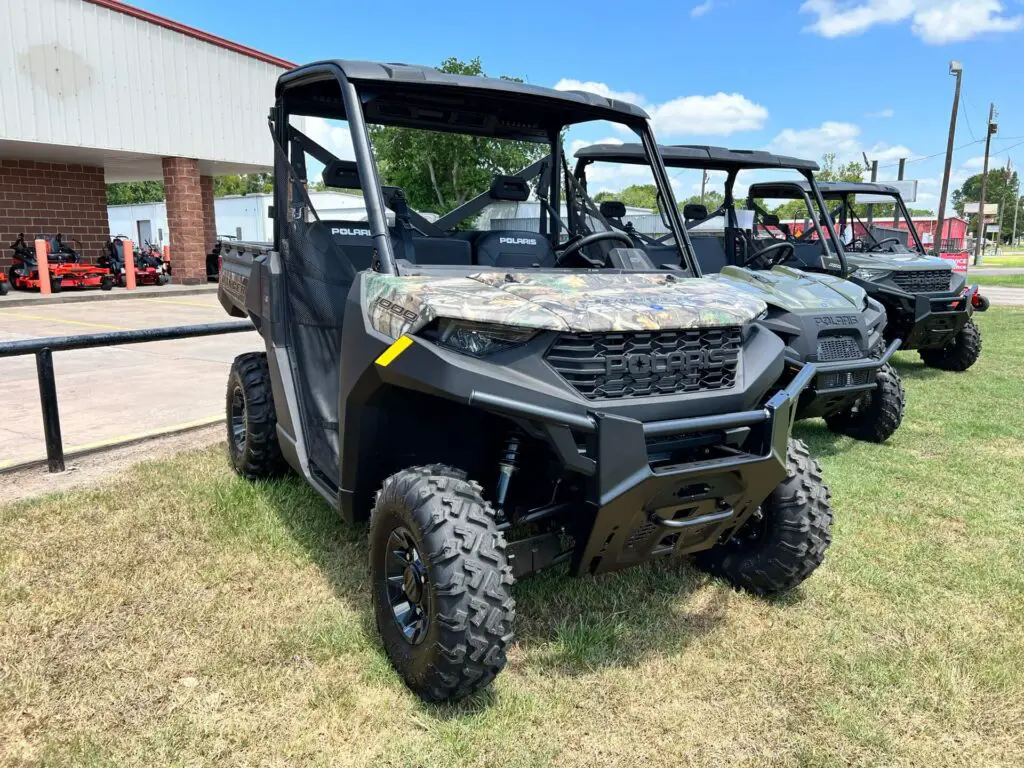
According to official Polaris documentation, the Ranger 1000 top speed is 58 mph.
For reference, here is the published top speed:
- Ranger 1000: 58 mph
This speed is electronically limited by the ECU (engine control unit) programming which regulates fuel delivery based on current road speed. This speed limiter cannot be adjusted or switched off with the stock engine mapping.
So why does Polaris cap the speed at 58 mph when the 999cc engine seems capable of more based on its 61 HP and torque ratings? There are a few reasons:
Safety – Excessive speed increases the risks of crashes and rollovers. Governing top speed to 60 mph enhances control and stability.
Reduced Wear and Tear – Higher speeds put more stress on drive components leading to premature wear. A lower top speed may improve durability and reduce maintenance costs.
Emissions and Noise Compliance – Government regulations limit UTV speed, sound levels, and exhaust emissions during testing. A governed top speed simplifies compliance.
While a 70 mph top speed sounds exciting, Polaris has determined that 58 mph is the ideal maximum for safe, reliable operation under normal conditions.
Polaris Ranger 1000 and 570 Top Speeds by Model Year
| Model | Year | Top Speed (mph) |
|---|---|---|
| Polaris Ranger 1000 | 2023 | 64 |
| Polaris Ranger 1000 | 2019 | 58 |
| Polaris Ranger Crew 1000 | 2023 | 58-65 |
| Polaris Ranger 1000 | 2020 | 58 |
| Polaris Ranger 1000 | 2018 | 58 |
| Polaris Ranger 1000 | 2016 | 58 |
| Polaris Ranger 570 | 2023 | 44 |
*Estimated top speed based on latest model year available
This covers both the Ranger 1000 and 570 models across various years, with the table showing the top speed for each one. The 2023 figures are estimated assuming similar speed to the newest prior model year available.
What About Without the Speed Limiter?
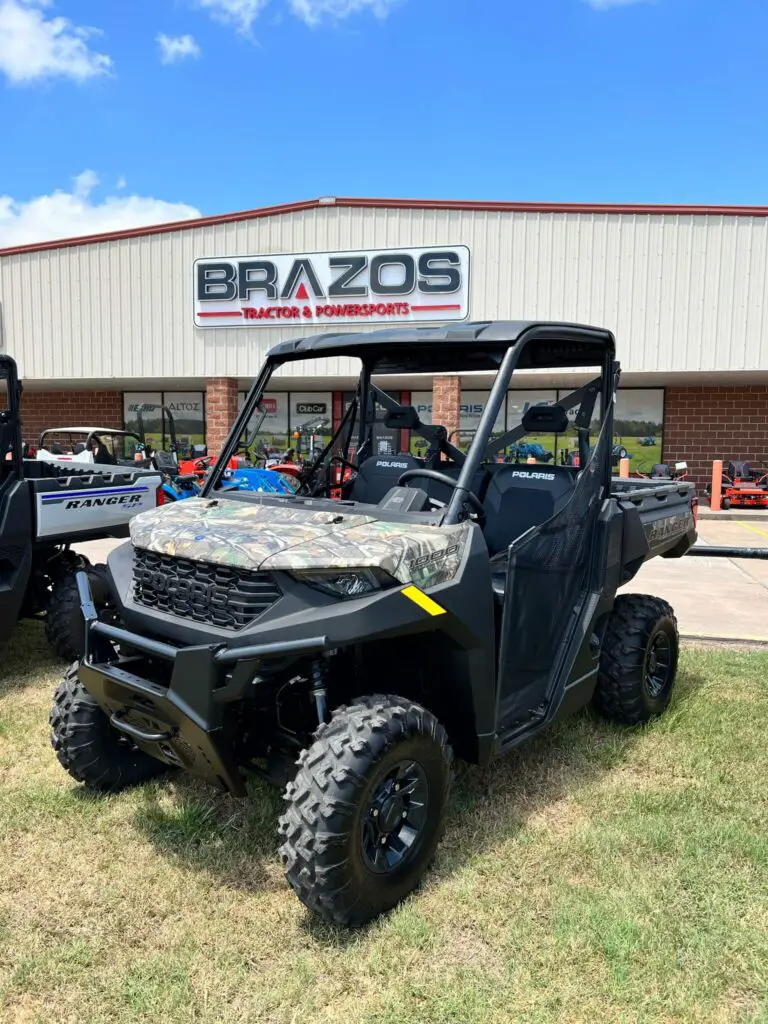
The Ranger 1000 engine has power to spare beyond a 60 mph top speed. Owners who have overridden the speed limiter report topping 58-64 mph with some even hitting 65-70 mph on flat ground!
How is this increased top speed achieved?
The most common ways to bypass the stock speed regulation include:
- ECU Tuning – Re-flashing the engine control unit’s programming to raise or eliminate the governed top speed threshold.
- Clutch Kit Install – Aftermarket kits reconfigure the CVT clutch calibration for higher speeds while optimizing torque and response.
These modifications allow the 999cc, 61 HP engine to stretch its legs and reach higher velocities of 58-64 mph. However, both come with significant safety considerations covered later.
Let’s talk more about unlocking that potential through modifications!
Boosting Speed with Modifications
Beyond ECU and clutch tuning, what other upgrades can eke out higher top speed in the Ranger 1000 while improving overall performance?
Here are 4 common modifications owners make:
1. Intake and Exhaust – Aftermarket air intakes, mufflers, and full exhausts enhance airflow and reduce backpressure. More peak HP boosts acceleration and speed.
2. Tires and Wheels – Larger diameter tires effectively lower final gear ratio, allowing higher speeds before max RPM is reached.
3. Gearing Changes – Reconfiguring differential gear ratios or installing lower ratio transmission kits further extend speed capabilities.
4. Lighting Reduction – Trimming vehicle weight by 200-300 lbs or more aids acceleration and increases speed.
Of course, balancing these performance gains with durability and drivability considerations is important so research modifications carefully.
And as speed increases, so does the importance of safety…
Is Exceeding 64 MPH Actually Safe?
While the thrill of testing the upper speed limits in a UTV like the Ranger 1000 may sound exciting, there are substantial risks to driving over 64 mph off-road.
Some key precautions include:
- Stability Control – Electronic systems that detect slip and selectively brake wheels to avoid rollovers are highly recommended. Models without them can be unstable at speed.
- Helmet and Restraints – Seat belts and shoulder harnesses should be properly worn and a DOT-approved helmet used by all occupants when exceeding 30 mph.
- No Passengers – Only drive solo when testing higher speed limits. The extra weight and movement of passengers in the rear seats can compromise handling.
- Flat Surfaces – Find long, flat dirt paths or roads without surface obstacles or turns to avoid accidents when traveling over 50 mph. Sudden steering inputs at speed heighten rollover risk.
While speed limiters, stability systems, helmets and common sense aid safety – understanding the handling limits of UTVs during high velocity operation is critical. Just because a vehicle can exceed 64 mph does not mean it should be recklessly piloted at those speeds off-road.
How Does Speed Impact Durability?
In addition to safety considerations around topping 64 mph in the Ranger 1000, durability and maintenance should be factored as well.
Some reliability impacts include:
- Increased Engine Wear – Holding maximum RPM accelerates piston, rod, bearing and valve-train wear reducing rebuild intervals.
- Drivetrain Stress – Higher output loads placed on CV joints, differentials, gears, belts/chains, etc. advance fatigue failure.
- Reduced Suspension Life – Faster compression cycles take a toll on shock absorbers and bushings not designed for high speeds.
- Frequent Fluid Changes – Service intervals may need to be nearly halved for oil, coolant, transmission fluid and gear lube to counteract increased operating temps and dirty conditions.
- Impact Damage – Riding at 64+ mph leaves little reaction time. Striking obstacles like rocks, stumps or even brush can cause serious machine or bodily damage.
Clearly, pushing past 64 mph accelerates wear substantially in most Ranger 1000 components while impact risks rise. Is the added performance benefit worth significantly higher maintenance costs and repair bills? Every owner will have a different perspective, but understanding these elevated durability trade-offs is vital.
What About Legal Speed Limits?
Before making modifications allowing speeds over 64 mph, be sure to research your state/county laws governing UTV operation…
Violating posted speed restrictions can result in:
- Fines – Speeding tickets of $100+ are common. Some areas impose licenses suspensions.
- Impound Risk – UTVs driven recklessly may be confiscated immediately by authorities.
- Insurance Issues – Coverage may not apply if accidents occur when exceeding legal limits.
You should also verify insurance regulations in your region regarding operating ECU/clutch modified vehicles. Some providers may cancel policies if modifications leading to speed limit violations cause an incident whether legal action is taken or not.
Reviewing these governing factors for your region is an important step before performance upgrades.
What Do Owners Say About High Speed Handling?
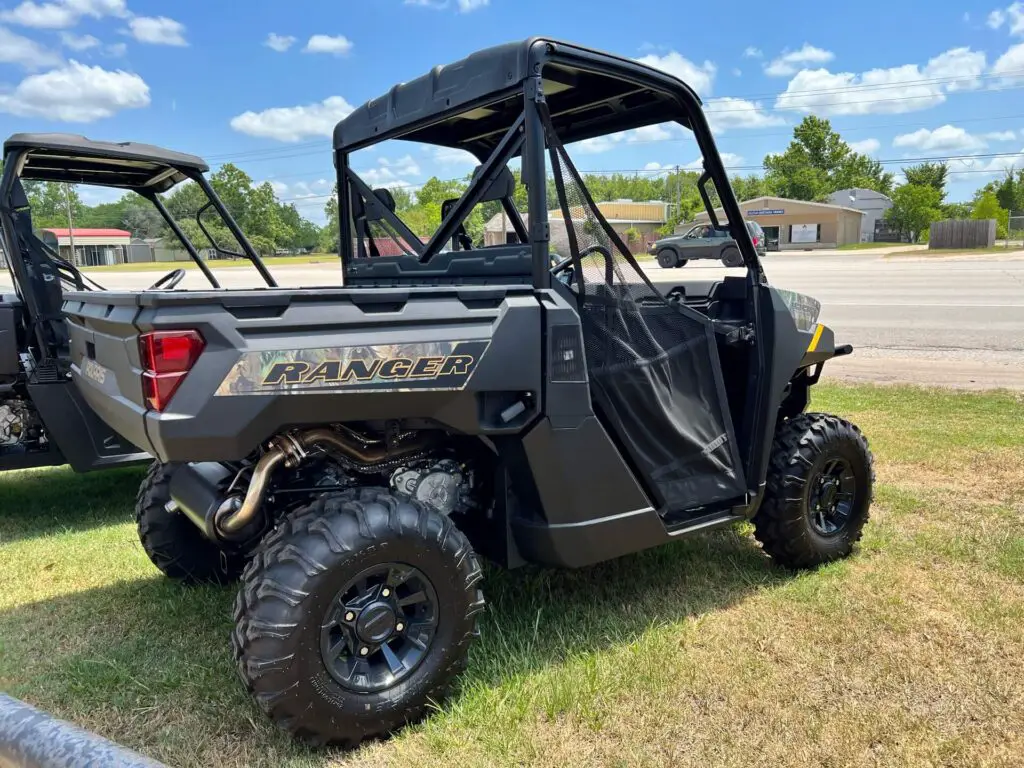
While manufacturers rightfully limit top speed for safety and reliability reasons, many off-road enthusiasts seek extra velocity for recreational enjoyment.
But what do real owners who have pushed past 64 mph say about high-speed handling and performance in the Ranger 1000?
Here are some impressions:
“I installed a clutch kit and ECU tune on my 2021 Ranger Crew allowing speeds up to 70 mph. Above 55 mph the EPS light and reduced steering assist warnings come on making it tougher than expected to control.”
“Once I hit 50 mph, the front end got really loose and wanders a lot. I won’t go past half throttle now which keeps me around 50 mph. Too scary above that!”
“When I removed the limiter, it felt great topping 60+ mph on level ground. But the first bump or turn at that speed and it felt like I was getting flung from the machine! Slow is smooth, smooth is fast applies big time.”
Most report that while limited high-speed thrill rides may be exhilarating in short bursts, continuous speeds above 55 mph degrade stability and control quickly. Sudden steering/braking inputs at 60+ mph also heighten rollover risk as these tall vehicles become more uneasy.
Care should be taken not to overdrive the Ranger 1000’s handling capabilities at speed for maximum control and safety.
Conclusion and Key Takeaways
While unleashing over 64 mph from the Polaris Ranger 1000’s 61 HP, 999cc engine is possible, carefully consider the safety, durability, maintenance and legal impacts explored above before making modifications allowing ungoverned speed.
Here are the key top speed takeaways based on our analysis:
Polaris Ranger 1000 Top Speed Summary
- Stock Top Speed – 58 mph. Speed limited by ECU for safety.
- Modified Top Speed – 70-80 mph possible by installing clutch kits, ECU tuning and other upgrades.
- Safety Risks – Stability control recommended over 50 mph. Solo driving only. Significant rollover risks on bumpy terrain.
- Durability Tradeoffs – 2X+ wear on engine, driveline and suspension components.
- Legal Issues – Most public land trail and road speed limits under 35 mph. Research regulations.
- Handling Limits – EPS assist fades above 55 mph. Marginal control in turns/bumps at 60+ mph.
While the Ranger 1000 may be built extra tough, its capabilities on backroads and trails align better with governed 58 mph operation. But for those seeking higher speed thrills, hopefully this breakdown has provided the knowledge needed to make educated decisions about modifying and piloting this versatile UTV at velocity limits that suit your needs…and keep you grinning!
